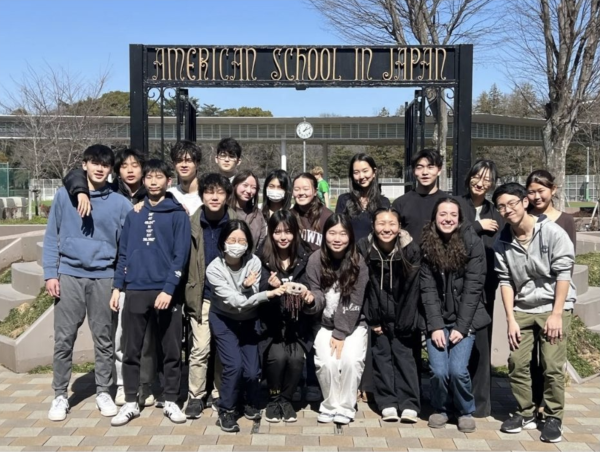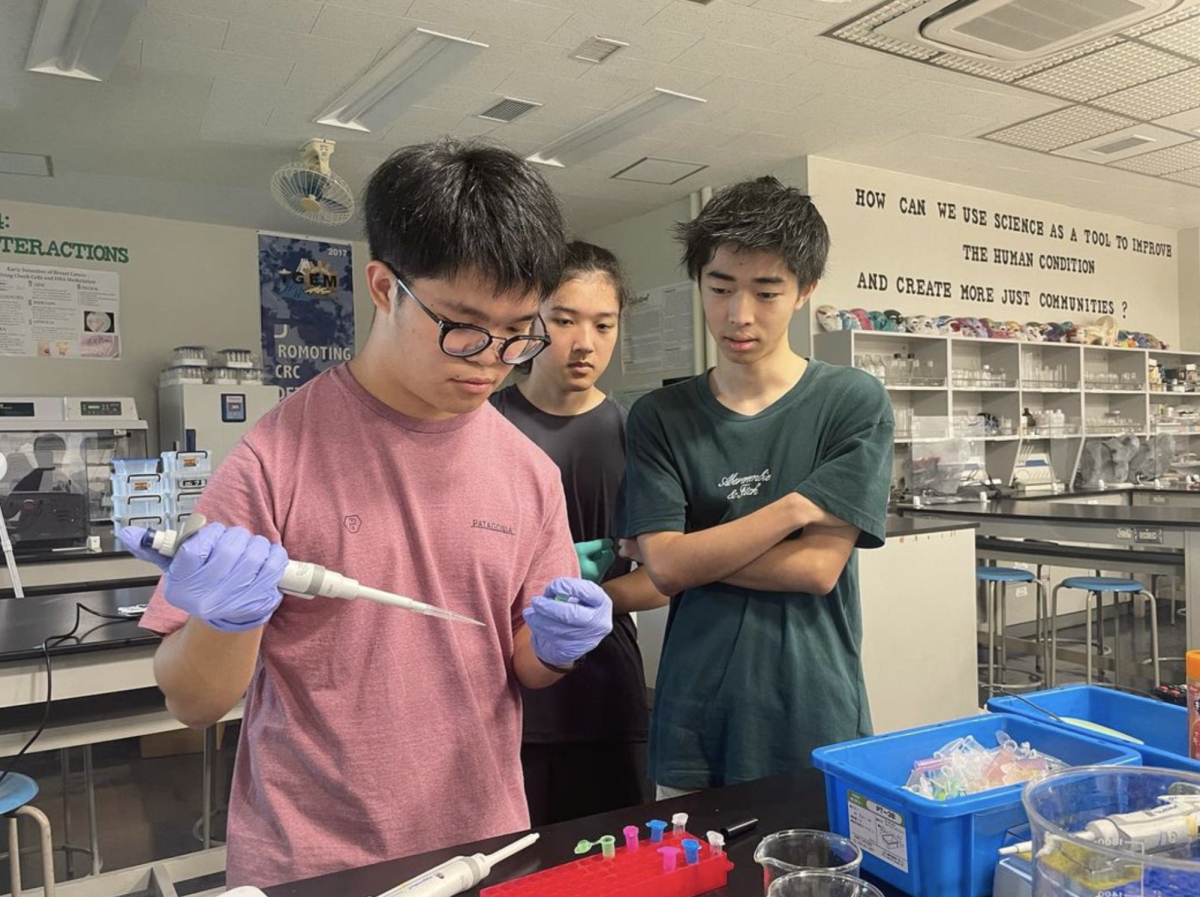The functionality of plants on our planet is manifold: they provide us with oxygen, contribute to lush green landscapes, and form the basis of entire ecosystems. This year’s iGEM team aims to expand this list by researching a novel function—electricity generation.
Over the next two years, ASIJ’s iGEM team will focus on enhancing the efficiency of biophotovoltaics (BPVs), an electrochemical system referred to as “living solar cells” for their capacity to capture light energy. These systems harness the energy generated by plants during photosynthesis and convert it into usable electrical energy.
“We’re essentially using plants and the photosynthesis system to produce electricity,” Principal Investigator Minso Kim (‘25) said. “BPVs, as of now, are pretty low efficiency, so we want to work on improving their efficiency.”
iGEM, also known as the International Genetically Engineered Machine competition, is currently the world’s largest synthetic biology challenge, offering students across the globe a platform to devise innovative biological systems aimed at addressing various societal challenges. Each year, ASIJ’s iGEM chapter focuses on an area of synthetic biology they believe has the potential to tackle pressing social issues.
Last October, the team concluded a project aimed at addressing Japan’s plastic waste problem by developing a more cost-effective method for producing bioplastics from food waste. Ultimately, the team’s research and community outreach initiatives earned them Gold Medal criteria and a nomination for Best Education in the high school division at the 2023 iGEM Grand Jamboree held in Paris.
As part of iGEM’s team application cycle following the Jamboree last fall, ASIJ’s chapter hosted an internal pitch competition in December where both returning and prospective team members proposed possible research areas ASIJ iGEM could pursue this year.
The idea of converting grass clippings into solar energy using BPVs garnered widespread interest from the judging panel. Pitched by Alec Ondo (‘25), Lui Ham Lee (‘27), and Akshay Dattaguru (‘25), the topic was later selected as ASIJ’s iGEM project, slated to end in 2026. “For me, it was a topic that was really interesting,” Akshay said. “We’re basically just hijacking a natural life process and using it for our own benefit.”

“I remember when I was listening to the pitch, it was something I’d never heard of before,” Sasha Fujiwara (‘25), an iGEM team member who also worked on the bioplastics project last year, recalled. “BPVs are a very novel area since you often just hear about solar panels, hydropower, and all these different renewable energy sources. Being able to look into [BPVs] is really exciting.”
Currently, the team is concentrating on researching BPVs in various plants as part of their preparation for the wet labs they will conduct in the summer. “Some of the past research we found focused on just one plant species,” Minso said. According to her, the challenge they face now is expanding the scope of their research and conducting a variety of tests on different plants.
Understanding the mechanisms of BPVs before attempting to enhance them also requires considerable effort. In BPVs, the team learned that the electron transport chain plays a crucial role in facilitating the transfer of electrons generated from photosynthesis to the electrode surface, thereby generating an electrical current. Therefore, improving electron transfer efficiency would theoretically lead to greater electricity generation.
“But we also found that there’s quite a lot that still remains unknown,” Minso said. “There are limitations in trying to manipulate the electron transport chain and transporting the electrons from the photosynthetic cell.”
As a result, the team is currently investigating a two-species BPV system, which incorporates two separate sources of electricity generation. This approach also has the potential to broaden the spectrum of substances that can be utilized to produce electrons within the system. Sasha, in particular, is examining the resilience of plant cells in a two-species system, which can be delicate when dealing with two distinct energy sources. “If we were to deploy powerful photovoltaics at scale, then [cells] have to be durable,” he said. “I’m trying to improve that.”
If the team succeeds in significantly enhancing the efficiency of BPVs, it could change the way that the ASIJ community powers itself.
“The end goal might be that we have another solar panel that uses BPVs at our school at the end of the two-year mark,” said Dayoung Ko (‘25), who is currently researching the possibility of genetically engineering glycerol dehydrogenase (GlyDH), a key protein in BPVs that enhances the efficiency of electron transfer. In addition to solar panels, iGEM members have also discussed using the generated electricity to power TI-Nspire calculators and MacBooks.
Team members are not only exploring applications within the campus but also contemplating the broader societal impacts of their contributions to BPV research. “Hopefully, in the future, BPVs can be generalized to other plant species so that we can harvest electricity from gardens and trees,” Minso said. Dayoung also noted that electricity generation using plants is “more environmentally friendly” compared to traditional methods such as coal and natural gas.
“If the science is able to get to that level of global usage, we could provide electricity to so many more communities—that’s what really interests me and excites me about this project,” Alec said.


